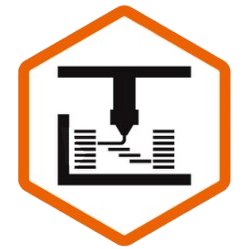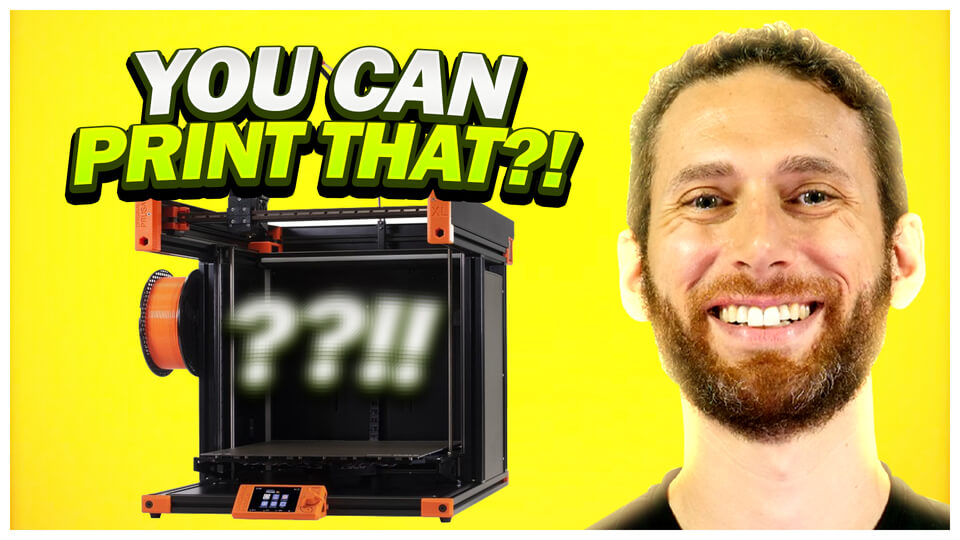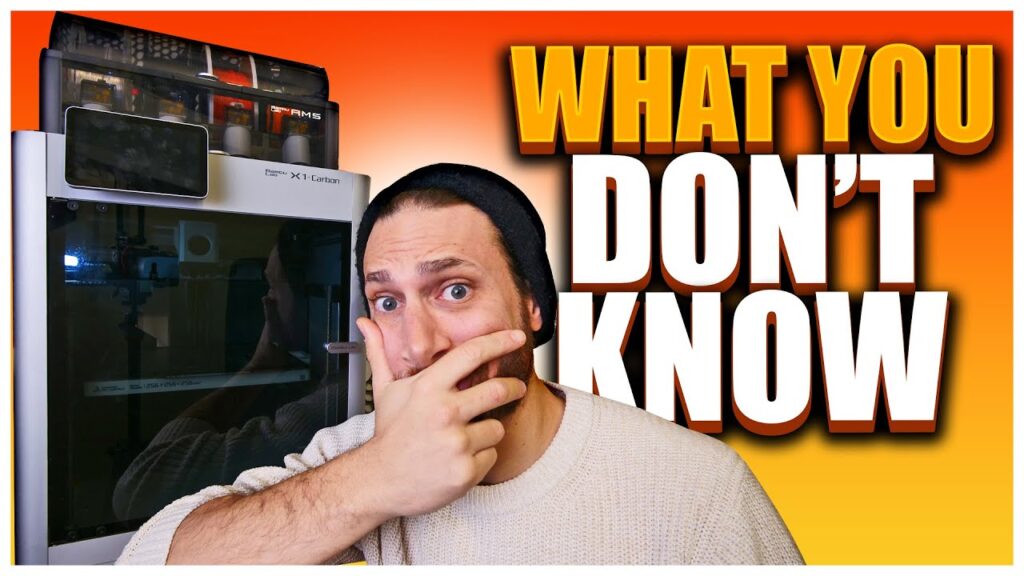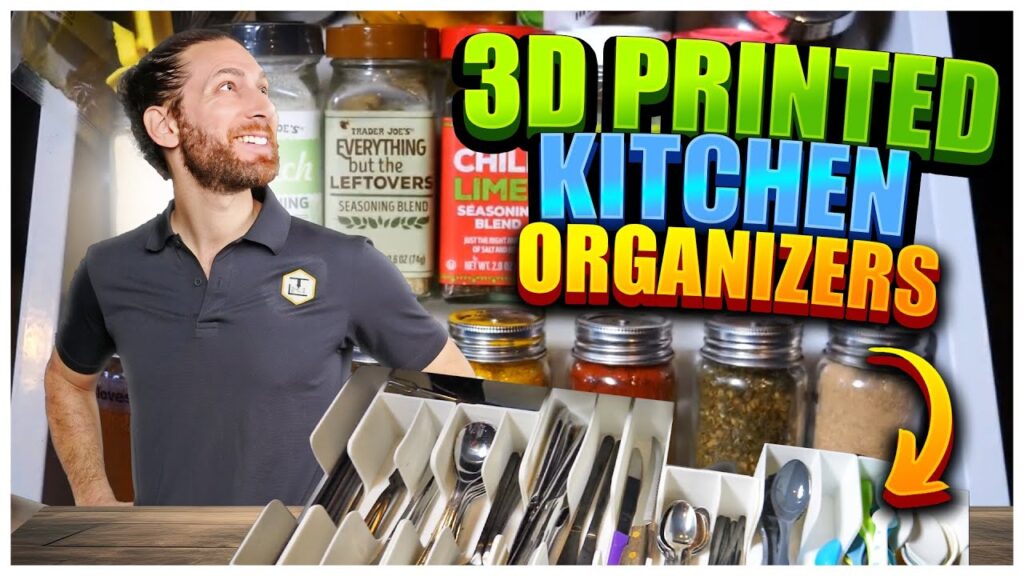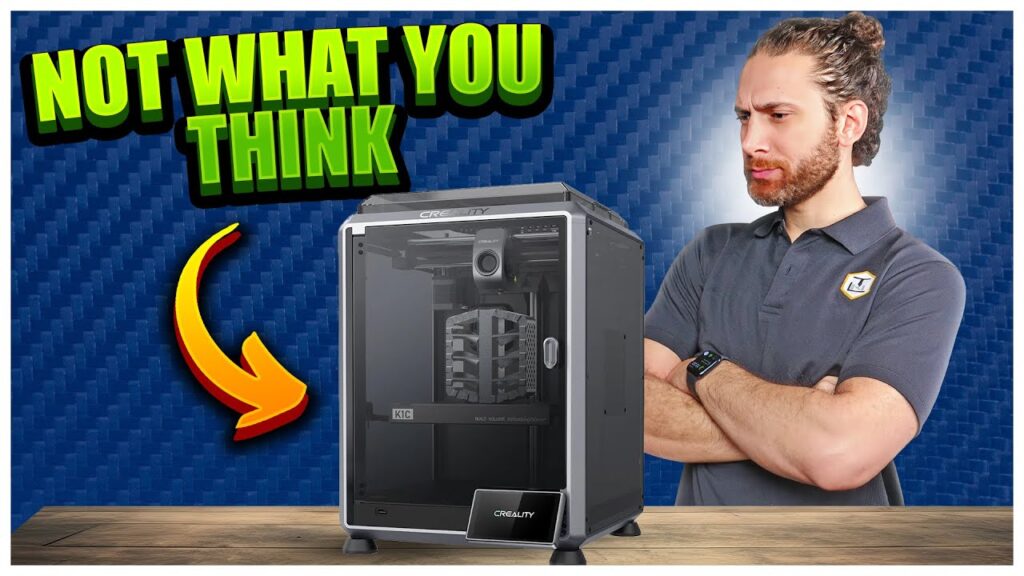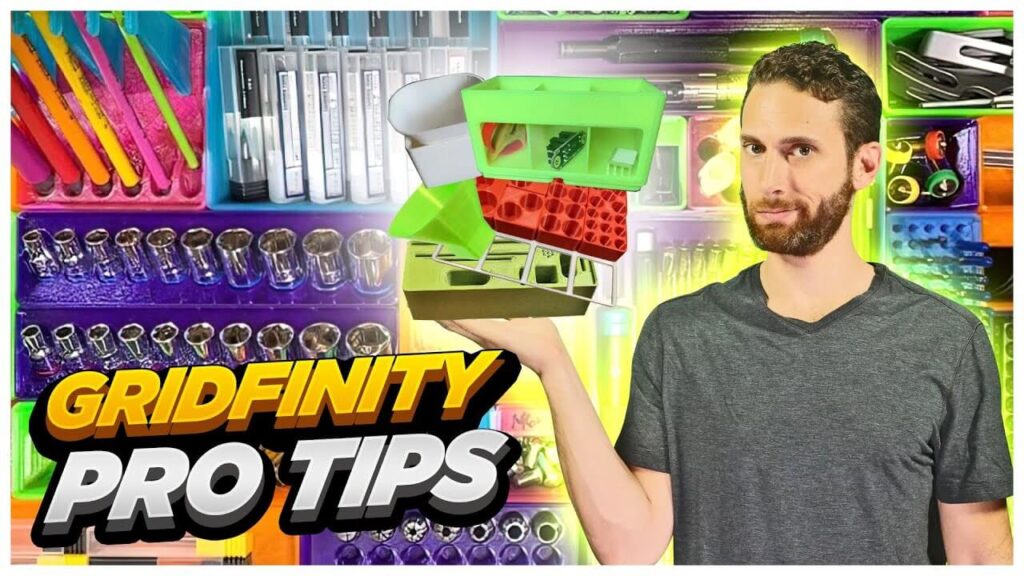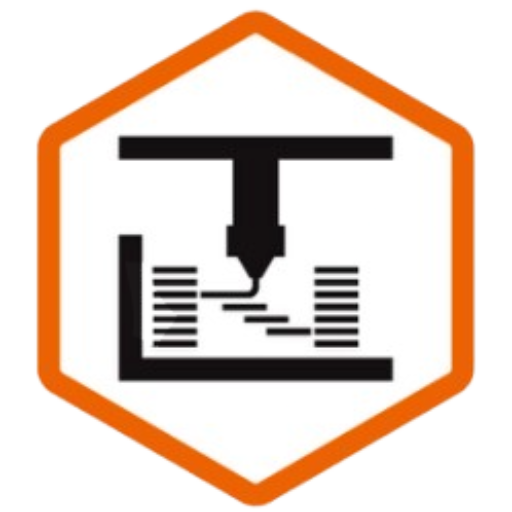Your 3D Printer can print way more functional, useful 3D Prints than you probably realize.
In this guide, I’m going to share with you a whole bunch of 3D Print ideas so practical, even your wife or significant other will have to agree that buying another 3D printer is a good idea, after all!
If you’ve got a 3D printer, and, if you’re like me, the first thing you ask yourself is: “What should I print now?”
You’ll go through your “printer upgrades” phase, printing out at least a kilo of items and trinkets that may or may not actually improve your 3D Printer or your 3D printing workflow, but then what?
Eventually, one of two things will happen. Either you’ll get sick of printing stuff that doesn’t actually have a purpose, or, like me, your wife or significant other will get sick of a bunch of useless plastic crap kicking around your house.
So what you do next? You’ll go find cool 3D prints that actually serve a purpose!
What Are The Most Useful 3D Prints?
In this article, I’m going to share with you some of my favorite, most useful 3D prints… actual, functional 3D prints that solve real problems for you and your family.
So let’s get started!
Trash cans
Let’s start the list off with probably the prints I use the most, and the one that has earned me the most praise from the Mrs – trash cans. Yes, trash cans.
I don’t know why, but where I live, a decent-looking, stylish trash can cost as much as $75 + shipping:
Which I guess is fine, but all the decent-looking ones are incredibly small – like 3 or 5 liters, max.
I don’t know about you, but I hate emptying the trash cans twice a week, and with things like failed prints, or, more honestly, lightly-soiled diapers, small trash cans just don’t work in my house.
Fortunately, thanks to this clever design by Gazzaldra on Cults3D, this was no longer an issue!
Don’t get me wrong – the trash can itself is hideous… but the lid is nice. So, all I did was take the lid that Gazzaldra created, and pair it with my very own design for the actual bin – which my wife specifically approved, of course.
Throw in a Boolean modifier to pair the two together, a simple ring in the middle to reinforce the sides, and voila, you have the most romantic gift a person can give to their special someone: “Here, honey, I designed a custom-made trash can for you.” I just hope her friends don’t get too jealous.
Now, in case you’re wondering about size: yes, if you want to go big, you’re going to need a bigger-format 3D printer, like my Creality CR-10 V3, or the Anycubic Kobra Max.
But to be completely honest, I printed the maximum size I could on the CR-10 for my office trash can, and it actually turned out to be too big.
Some quick math and flashbacks to the trauma of high school geometry tell me that on a Prusa MK3S+, with it’s 21cm print height, you could print a short and chunky trash can with approximately 7 liters of volume – twice that of most of the trash cans I found.
You could print the design as-is, and still end up with a 4-liter trash can that prints in around 3 and a half hours, plus however long it takes to print the optional lid. Don’t worry, I’m sure your wife or spouse will tell you it’s plenty big enough for her.
Oh, and by the way, on the topic of trash bins, I just had to throw this in. When we designed our kitchen, the carpenters told us that Blum, the company that makes the drawers, only offered the trash cans in a few dimensions, and that unfortunately, this meant that we were going to have a big, empty space in between our trash cans – and no room for a third bin for compost.
F that noise! I whipped up Blender (mostly because I didn’t know about OnShape yet), and designed a hanging compost bin that not only fits in between the two bins, it also closes to keep in the stench of decaying plant matter, AND, as a bonus, it helps hold down the trash bag holders, which for some reason liked to float up and get stuck every time we tried to open the drawer.
Tell me you’ve seen a cooler solution for storing compost in the house. I’ll wait.
Shelf supports
When designing my custom-made studio slash guest room slash workshop slash shrine to 3D printing and Bitcoin, I wanted some shelves that stood out, and which had a more masculine design than many of the readily available shelf supports out there.
Fortunately, I found these awesome shelf brackets by condruttoma on Thingiverse, which allowed me to combine black and gold in a beautiful and unique way.
To be honest, the interior designer was NOT a fan, but I like them a lot.
Don’t worry, if you’re not a fan, either, there are hundreds of models on Printables and Thingiverse to choose from, many of which are optimized for strength, and will tell you approximately how much weight they’re designed to hold.
Signage
Another cool way to make use of your 3D printer is by making signs.
I’ll be honest with you, I actually own one of those overpriced Cricut vinyl cutting machines, and so making vinyl signs and stuff is really easy for me… and yet I still really prefer making signs and stuff with 3D printing.
The end result is just so much more impressive and polished than sticking a vinyl sticker on something – though I guess you could print out the sign board, and then put vinyl on it.
I’ve custom designed signs warning would-be intruders to stay out of our yard, nifty promotional business-card holders for my company’s trade-show booths and even handy little Wifi QR code signs so I don’t have to give people the WiFi password every time they come over.
You can use the instructions and files from radiojack on Printables, though I found that you can actually just put in your wifi information on QRCode2STL and it will generate an STL with the right QR code for you.
You can even put an indentation on the back for an NFC chip, so that people don’t have to take out their phone, go into the camera app, and scan a QR code like cavemen.
The sky is the limit as to what kinds of signs you can create, but just remember, for anything that’s going to go outside, use either ASA filament, or at least PETG, for their superior UV resistance!
Phone cases
Let’s take a break from the around-the-house stuff for a minute, and talk about phone cases.
Have you ever stopped to consider just how ridiculous it is to pay $49 for a simple piece of silicone to cover your phone?
That’s like, 2 rolls of filament, and, quite frankly, the basic cases are well… basic.
Instead, you can actually print your own phone cases, in TPU, PETG, or even PLA, and while you probably think that they’ll turn out super janky looking, with a little bit of tweaking, tuning, and cleanup work, they can actually look pretty good.
I like to print them with zero top and bottom layers, and use different patterns of infill to create a unique effect that nobody else has.
I can’t tell you how many times my wife and I have been complimented on our phone cases, and people are blown away when they discover that I printed them at home.
This is especially cool because often times, you get a new phone, and the only options for the first month or two are the insanely expensive ones from authorized manufacturers.
One other cool benefit of printing your own, is that you can customize them.
My phone, for example, wouldn’t charge wirelessly if I had the thickness of a case and my popsocket – so I just cut out a hole in my slicer using a negative volume modifier, stuck the popsocket directly to the phone, and lo and behold, the popsocket not only sticks better, but wireless charging finally works without having to remove the case every night.
Custom cable channels
Here’s a cool one that I know you’re going to love.
You know how we all have little cables, pipes, and other annoying and ugly stuff around our house? Well, it’s time to hide your shame!
You can buy these cable channels at a hardware store for many purposes, such as straight lines on white walls… but if you have a more challenging scenario, like a drainage hose that curves, or a water pipe that bends at a 90 degree angle in a highly-visible place, this is where 3D printing can come to the rescue.
Plus, unlike those plain, ugly, store-bought ones, you can choose from a bajillion different color filaments out there to get the one that blends in most with your wall, tiles, or background.
This was one of the fastest, simplest things to design, but it’s one of the coolest ones – and probably one that pleased my wife the most.
Hardware
Let’s now talk about hardware.
One of my favorite things about 3D printing is that it helps ameliorate my insane levels of impatience.
Where I live, hardware stores close early on Friday, and don’t open up again till Sunday, the start of the work week. This means that inevitably, when I’m milling around the house on Saturday looking for fun DIY projects, I will discover something I need that isn’t available when I need it.
This has run the gamut from all different kinds of Screw anchors for various size bolts and material types, to Flexible washers or rubber seals to fix various leaky pipes or kitchen stuff like my favorite water bottles, and even the occasional nuts or bolts if I’m in a pinch and don’t need something too too strong.
You’d honestly be really surprised how many different types of brackets, mounts, and miscellaneous hardware you can print.
While I’m not going to advocate something like using 3D printed bearings instead of real ones, you can definitely get by 3D Printing some of the stuff that would normally take a trip to the hardware store.
When I was building the fence for my back yard, I needed spacers to go between the planks.
The magnetic ones recommended by the manufacturer of the fence rails were not only twice as thick as I wanted, they also cost $0.80 each.
Considering I needed around 2,500 of them, that was going to be a serious expense. Instead, I bought a few rolls of durable ASA filament, and I printed them, saving myself nearly $2,000 in the process!
Tripods and articulating arms
Here’s the scenario: you’ve got stuff.
You want that stuff to stand in a certain way, in a certain place.
This could be mounting your phone or iPad somewhere, mounting a light in your work area or filming background, or sticking a camera on your dashboard, desk, printer, or whatever.
Once again, you can print most of this type of stuff.
I’m not gonna lie, I didn’t get along with sneaks’ popular Raspberry Pi articulating arm system I printed… too complicated, too many directions of rotation, and the 3D printed bolts couldn’t withstand the torsion of regular adjustments.
But there are, however, plenty of other designs, such as this sturdier boom arm type design by hamkers that can be scaled up to fit your needs.
I also really enjoy this 3D Printed Tripod I made to hold one of my lights – and it’s actually better than the little mini tripods that came with some of my lights!
With a little creativity here, the sky is the limit, and this definitely isn’t limited to just my fellow video creators.
You could create tripods to prop up accent lights in your house, articulating arms to hold things like magnifying glasses or work pieces, and more.
Lights and Light Housings
While we’re on the topic of lighting, let’s talk about lights and light housings.
Personally, I haven’t taken the plunge to print out an entire 3D printed light housing yet – but that doesn’t mean I haven’t dabbled in 3d Printed lighting solutions.
I’ve 3D printed deflectors for studio lighting, custom-designed light housings to hide LED strip lights, A heat-resistant set of brackets to hold high-powered LED panels I repurposed from some outdoor lights, diffusers for some ugly kitchen light bulbs that stood out too much.
I have replaced a diffuser for one of the light fixtures in my house that… uh… got broken because someone wasn’t gentle enough when installing it I’ve even rescued a few of my overpriced Philips Hue bulbs that I dropped from the trash can, by printing out new diffusers for them.
3D printing for lighting purposes is a lot of fun, and is a great way to showcase the possibilities of 3D printing as a whole.
Just make sure that you print with PETG, preferably “natural” color, so that you get that diffusion effect without blocking too much light.
Heavy-duty, mechanical tools
A lot of times, we write off additive manufacturing as not being strong enough, precise enough, or polished enough to create these types of things, but if my previous projects proved anything, it’s that this simply isn’t true.
Planters
I’m going to assume that you’ve already seen some 3D printed planters, especially because Printables did a big competition recently to showcase some of the best designs.
But what always blows my mind is that people don’t take this idea to the logical extreme, like I have.
Sure, tiny little plant pots for your succulents are cool and all, but like I mentioned before, even a standard Prusa MK3S+ can print a 7 liter volume cylinder… and if you, like me, have managed to convince your wife that you simply need a large-format 3d printer, you can go much bigger than that.
Some of these designs turned out much nicer than others, to be honest, for the style of my home, I’ve actually had the most success with just whipping up my own, very simple designs in either Blender or OnShape.
Here again, what’s cool about this is really the ability to play with different styles and colors, to exactly match the floor, a piece of furniture, and so on.
One tip on printing planters: from my experience, there’s really no need to waste tons of filament by printing these thick sides and mimicking what a ceramic planter would look like.
I’ve had tons of success simply printing in vase mode, with a little reinforcement ring somewhere inside.
Sure, I suppose I could run into trouble when the roots of the plants grow and expand, but for now, even tightly-packed soil and regular watering haven’t phased any of my planters.
Furniture modifications & Upgrades
When I was designing my workspace, I wanted a custom-made shelf to lift my laptop up off the table, so that it would be at eye-level whether I was working standing up or sitting down.
And because I also love to do maker projects, clean 3D prints, and assemble parts on my desk, I wanted to get as much light as possible in from the sides of this shelf, and have as much room as possible for pushing my keyboard, trackpad, and other junk out of the way so I can tinker.
I went about designing some cool stands to hold this shelf, made out of plastic, rather than wood, so that I could create tons of holes for light to pass through.
I then reached out to a local company for a quote printing them on a large-format printer, and they quoted me about $500 for the set!
So, for $549 at the time, I picked up a Creality CR-10 V3, and printed those bad-boys myself.
While they didn’t come out perfect – I hadn’t yet mastered the large-format bed and had a lot of difficulty with warping – the end result is really cool.
It’s also lighter-weight than a wooden counterpart would be, meaning I can easily lift the entire thing off my desk if I need more room to work.
This is just one idea for how you can level up your furniture, though.
You can also modify your existing furniture, like I did with my IKEA chair to help it slide under my desk, you could print custom-designed, nearly-invisible TPU socks for your couch or bed to protect your floors, and of course, you can create some really nice mounting solutions for wires and electronic components, to hide those wires.
The sky is the limit. All you have to do is look around your house at your furniture, and ask “what’s wrong with you?”
Drawers
One of the things I love about 3D printing is that I can create things that either don’t exist, or simply can’t be found.
This includes literally hundreds of different designs for various types of drawers to suit every need, from under-desk drawers, to standalone drawer systems, modular drawer systems, and of course, Gridfinity drawers.
As I mentioned before, I was kind of frustrated with the possibilities of an off-the-shelf drawer manufacturer like Blum, and also, I didn’t want to deal with the weight of metal brackets and wooden drawers, especially since the heat of my laptop is already starting to bow the shelf on my desk.
Fortunately, I discovered these simple drawers from Avise on Printables, and then remixed them to max out the bed of my CR-30, yielding me 3 simple drawers for miscellaneous “stuff” I might need on my desk.
As you can see, I had a failed print that I decided to try and rescue, and honestly, printing them with 0 top and bottom layers was probably not the best idea for strength, but they continue to serve me well.
Entire organization structures
You already know that 3D printing can be used to organize stuff.
Honestly, that’s probably the #3 category of things people print, after printer upgrades and useless chotchkes.
But did you know that you can actually print entire organization systems?
I want to point out that while Gridfinity is awesome, it’s not for everything.
It wouldn’t make sense, for example, to print actual modular bins for bigger things, like kitchen utensils or cable organization.
Which is why I wanted to point out that there are, in fact, other systems out there for your organization delight. Personally, I really enjoyed putting together this electronics organization drawer using the system by wbu42.
It includes all sorts of different angles, lengths, connectors, overhangs, and pretty much everything you could need to create your own, custom organization system, with a minimum of plastic wasted on things like bottoms.
To be honest, this one took me a long time, and a lot of filament, but when I compare it to how I used to organize my electronics, in one-size-fits-all IKEA bins… it’s so much better.
I did try, by the way, to organize my kitchen stuff with this same system, but I ended up getting frustrated, and ended up with a bin full of spare parts that maybe, I might, possibly, one day, use to organize some other unsuspecting drawer.
3D Printing isn’t just for organizing small, lightweight stuff, either!
I’m sure many of you have seen RepKord’s open-source “Reprack” system for storing your filament on the wall.
Personally, I don’t have enough room on my walls to store all of my filament, but it’s a really cool idea, and one that I’d love to use if I had more space.
Conclusion
So there you have it, my long list of unexpected useful 3D prints.
I’d love to hear in the comments below – what’s 1 thing I shared in this article that you’d never thought to print before?
I hope you’ve really enjoyed this article, and I look forward to making more content just like it in the near future.
Until then, I wish you nothing but successful prints, and may all of our wives or significant others finally cave in, and let us buy yet another 3D printer. Amen..
